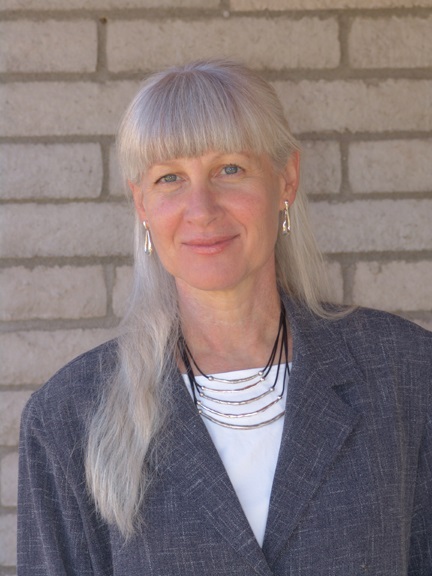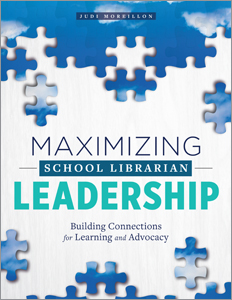Judi Moreillon on maximizing school librarian leadership
Chair of AASL’s Innovative Approaches to Literacy Task Force from 2016-2018 and past member of the ALA/ALSC/YALSA Interdivisional Committee on School/Public Library Cooperation, Judi Moreillon has been a champion of the school librarian as instructional partner for decades. Her new book Maximizing School Librarian Leadership: Building Connections for Learning and Advocacy builds on that track record, showing school librarians how they can work collaboratively to positively impact school cultures, curricula, and teaching practices. In this interview Judi discusses the way she designed the book with collaboration in mind, the impact of AASL’s new National School Library Standards, and advocacy tips for parental outreach.
You’ve written several previous books for ALA Editions. How would you say this book is different? Did you adjust your approach somehow?
My previous books with ALA Editions have focused on the school librarian’s role as an instructional partner. All three of those titles included classroom-library lessons plans for school librarians to coteach reading comprehension strategies and information literacy skills with classroom teachers and  specialists. While those books suggested instructional partnerships as a pathway to leadership, I focused the latest book on school librarians’ role as leaders in their own right in their learning communities. The new book was written as a book study selection. It comprises nine chapters, each with discussion questions, activities, and reflection prompts. My thought in organizing the book in this way was that school librarians and their colleagues would read and engage with one chapter a month. This would allow them to dive deeply into the ideas in each chapter, participate in discussions and activities, and process the information through reflection before going on to the next chapter.
specialists. While those books suggested instructional partnerships as a pathway to leadership, I focused the latest book on school librarians’ role as leaders in their own right in their learning communities. The new book was written as a book study selection. It comprises nine chapters, each with discussion questions, activities, and reflection prompts. My thought in organizing the book in this way was that school librarians and their colleagues would read and engage with one chapter a month. This would allow them to dive deeply into the ideas in each chapter, participate in discussions and activities, and process the information through reflection before going on to the next chapter.
The book will be useful for preservice and practicing school librarians who want to strengthen their own practice of school librarianship or educate others about how to help school librarians reach their capacity. District-level school library supervisors can use the book as a book study selection for professional development for the librarians they supervise. School librarians can also use the book to help district-level administrators, principals, or classroom teacher colleagues better understand school librarians’ potential for leadership and how the entire learning community can benefit from school librarians serving as leaders and instructional partners.
In your view, how do AASL’s new National School Library Standards help empower school librarians to become leaders?
Leadership is about influencing the values, priorities, and practices of others. In The National Library Standards for Learners, School Librarians, and Libraries, AASL includes two critical position statements: “Definition of an Effective School Library Program” and “Instructional Role of the School Librarian." The former notes that an effective school library program is staffed by a state-certified school librarian who is an instructional leader, teacher, and professional developer. The latter notes that the school librarian guides the learning community in formal and informal learning and leads digital learning and literacies through teaching and professional development. If school librarians achieve the goals of these positions statements, they will influence the instructional practices (and underlying values and priorities) of their colleagues through informal professional development (coteaching) and through formal professional development as well. Building-level school librarians and district-level supervisors who use the “School Library Evaluation Checklist” (p. 174-180) will quickly realize that the behaviors of leaders are evident throughout this assessment.
How early in their lives should children start learning about what it means to be good digital citizens and what role does the school librarian play in that process?
In the context of this book (focused on the work of building-level K-12 school librarians), it is never too soon for school librarians to include the ethical and safe practices of digital citizens in the behaviors they model and in the lessons they teach and coteach. For primary-age (K-2) students, school librarians point out the ways they cite their sources, secure passwords, and think about the digital footprints they are leaving as they demonstrate and teach information-seeking skills. In many K-2 classrooms, students do not have access to 1:1 devices or technology tools throughout the school day so the tech-supported learning through the school library program prepares them for future digital citizenship skills.
What are some advocacy tips you can give school librarians for performing outreach to parents?
School librarians use electronic newsletters, information published on the school library Web presence, and via social media to share what students are learning through the library program. Whenever they communicate with families, it is most important that parents know that school librarians and  classroom teachers coplan and coteach. This collaboration helps educators provide students with more effective and personalized instruction in literacy, content knowledge, and skills, such as communication, critical thinking, collaboration, and creativity. In the golden days of Information Power, we had a stamp that read “Classroom-Library Collaboration” that we used to brand students’ hardcopy work that resulted from collaboration. At that time, students also included such information in their electronic products such as Hyperstudio stacks. I continued this practice most recently in 2008-2009 in a secondary school library. I think it is essential that school librarians continually remind students, classroom teacher colleagues, administrators, and parents that two or more educators working in collaboration can better support student growth and preparation for colleges, career, and community.
classroom teachers coplan and coteach. This collaboration helps educators provide students with more effective and personalized instruction in literacy, content knowledge, and skills, such as communication, critical thinking, collaboration, and creativity. In the golden days of Information Power, we had a stamp that read “Classroom-Library Collaboration” that we used to brand students’ hardcopy work that resulted from collaboration. At that time, students also included such information in their electronic products such as Hyperstudio stacks. I continued this practice most recently in 2008-2009 in a secondary school library. I think it is essential that school librarians continually remind students, classroom teacher colleagues, administrators, and parents that two or more educators working in collaboration can better support student growth and preparation for colleges, career, and community.
What advice would you offer school librarians for building and sustaining connections to one another?
I am a strong proponent of developing relationships with colleagues through sharing effective practices and collectively strategizing solutions to challenges. Through serving on face-to-face and virtual AASL committees and participating in conferences and webinars, school librarians build a network of support, sharing, and professional development. Social media provides a just-in-time venue for continuous learning and reaching out to build personal learning networks. Facebook groups, Twitter hashtags and chats that are focused at the national and regional levels offer excellent opportunities for ongoing professional learning.
My response to this question would not be complete without a mention of the year-long book study support I am providing on my SchoolLibrarianLeadership.com blog for readers of my new book. Beginning in September 2018, I am dedicating four posts each month to each book chapter. Posts will provide additional information and discussion questions not included in the book. In addition, I am publishing one podcast each month to kick off readers’ engagement with each book chapter. (The August 2018 posts and podcast provide a preview of the book.) I invite and encourage readers’ comments on the blog. This blog-facilitated book study is another way to make connections, share ideas and experiences, and learn with and from colleagues. Readers can access the book study at https://tinyurl.com/maxsll18.
Learn more at the ALA Store.
